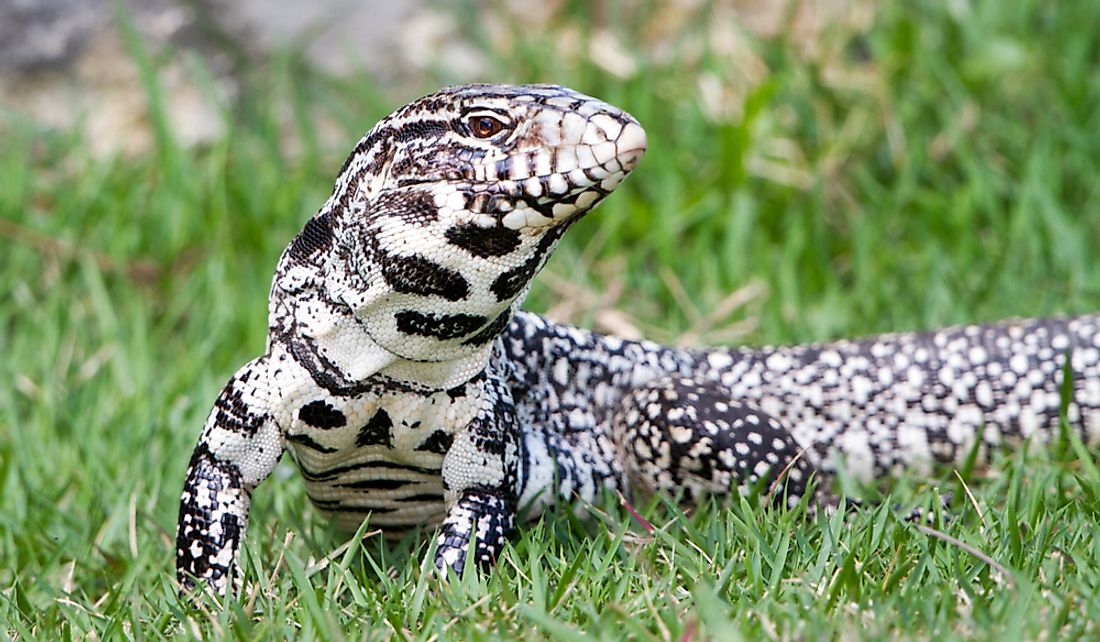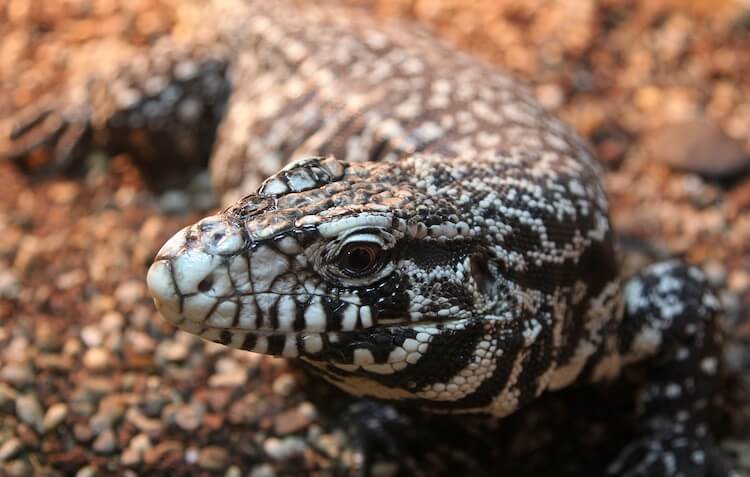The Argentine Black and White Tegu, scientifically known as Salvator merianae, is a captivating reptile species native to South America. With its distinctive coloration and impressive size, this tegu has become a favorite among reptile enthusiasts worldwide. In this article, we will delve into the characteristics, habitat, behavior, and conservation status of this remarkable lizard.

Physical Characteristics: The Argentine Black and White Tegu is a large lizard, measuring around 3 to 4 feet in length. It has a robust build, with a muscular body and a broad head. As the name suggests, its body is predominantly black with striking white bands or stripes that run across its entire length. These bands make the tegu easily recognizable and contribute to its unique appearance.
Habitat and Distribution: Natively found in the grasslands, rainforests, and savannas of Argentina, Paraguay, Uruguay, and Brazil, the Argentine Black and White Tegu thrives in diverse environments. It is an adaptable species that can be found in both tropical and subtropical regions. These tegus are well-suited to areas with moderate humidity and temperatures ranging from 75 to 95 degrees Fahrenheit.

Behavior and Diet: The Argentine Black and White Tegu is primarily diurnal, meaning it is active during the day. It is an omnivorous reptile with a diverse diet. Their food consists of both animal matter, such as insects, small mammals, birds, and eggs, as well as fruits and vegetation. Tegus are known for their intelligence and ability to recognize their owners, making them popular pets among reptile enthusiasts.
Reproduction: Breeding season for the Argentine Black and White Tegu usually occurs during the spring. Females lay clutches of approximately 15 to 30 eggs in nests they construct in burrows or under logs. These eggs are incubated for about 60 to 90 days before hatching. The sex of the hatchlings is determined by the incubation temperature, with higher temperatures resulting in more males.
Conservation Status: While the Argentine Black and White Tegu is not currently listed as an endangered species, it does face certain threats in its natural habitat. Habitat loss due to deforestation, as well as the capture of these reptiles for the exotic pet trade, are some of the primary concerns. It is important to promote responsible ownership and conservation efforts to ensure the long-term survival of this fascinating species.
Conclusion: The Argentine Black and White Tegu is a captivating lizard with its striking appearance and intriguing behaviors. As an adaptable species, it has successfully made its mark in various habitats across South America. However, it is crucial to protect its natural habitat and regulate the pet trade to maintain healthy populations of these incredible reptiles for future generations to appreciate and study.








